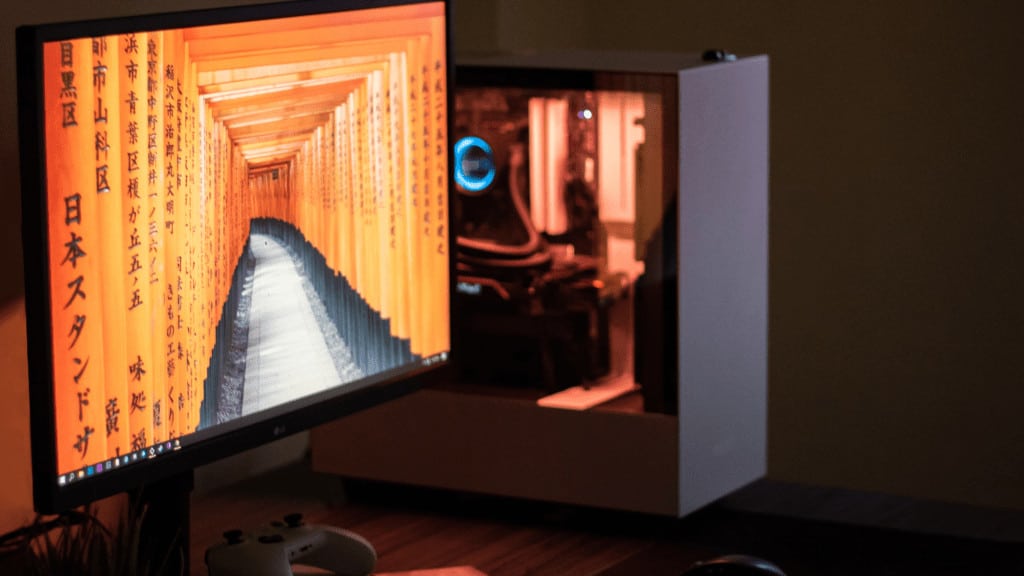Update: Jan 8, 2021
Update: Farewell to IOT Link, hello HASS.Agent
In the ever-evolving world of open-source projects, it's not uncommon for development to eventually stall or cease altogether. And so, we must bid adieu to IOT Link, a once-promising project that has now reached the end of its journey. It's important to acknowledge the dedication and effort the creator poured into IOT Link to cater to its growing user base. However, as more users joined, the focus shifted from introducing new features to fixing existing issues. The sheer variety of hardware configurations in Windows systems further complicates matters, making it challenging to achieve universal compatibility.
Fret not, for a worthy alternative has arrived in the form of HASS.Agent. This promising substitute is poised to fill the void left by IOT Link and continue the quest to seamlessly integrate Home Assistant with Windows. So, embrace the change and let HASS.Agent lead the way.
A delightful surprise recently graced macOS users with the arrival of the Home Assistant Companion for macOS. Unfortunately, Windows users are yet to receive an official app. However, fear not, as there is a method to integrate your Windows PC with Home Assistant using the application IOT Link.
IOT Link is not a full companion app for Home Assistant
In contrast to the official companion app for Home Assistant, IOT Link won’t provide you with a native interface or any tiles/widgets for your start menu. As such, it can’t really be described as the app’s counterpart for Windows. But IOT Link will allow you to control and monitor any system running Windows.
It is worth noting that this guide assumes that you already have Home Assistant as well as a MQTT broker, such as the popular Mosquitto, up and running. The installation and configuration of those two applications are not detailed here.
IOT Link Features
IOT Link, just as Home Assistant itself, is open-source software hosted on GitLab. Both the IOT Link API and Engine are open-source. Why is that important? Because IOT Link has a lot of control and access to your Windows system. And you should know what exactly is happening with the data that IOT Link collects. Once installed and configured, IOT Link offers two main functions: monitoring and controlling your Windows system.
Monitoring Windows in Home Assistant
If you’re looking to monitor your Windows PC using Home Assistant, IOT Link is just what you need. It can keep tabs on a plethora of components such CPU usage, display information (resolution), hard drive information (total, used, and free capacity), memory information (available, free, and total), power and battery information for laptops, network information, system information, and uptime.
IOT Link will even send periodic screenshots, which you can integrate into the Lovelace UI using a camera entity. For me, this is useful when I’m rendering a video for my YouTube channel (subscribe!). Being able to see what is happening on my desktop lets me know how far along the process is.
Let Home Assistant control Windows
Being able to monitor your Windows PC is good and all, but being able to remotely control it is even better. Forgot to shut down your system before going out? Use the Home Assistant companion app to do just that. Want to use a ZigBee remote to control your media? That can be done too. The possibilities are endless. Using IOT Link you can remotely shut down, reboot, hibernate, and suspend your PC. You can control your media. You can send keys and launch applications. And it can even show notifications.
A seamless approach to integrating Windows with Home Assistant
IoT Link offers a streamlined solution for integrating your Windows computer with Home Assistant, making smart home management a breeze. Simply download the executional file from the downloads page and run the installation wizard, ensuring you have administrator rights and the .NET Framework 4.7.2 installed.
Once IoT Link is up and running, you'll notice a new folder in your start menu by the same name. From there, select Open Configuration File and input your MQTT username, password, and IP. If you're a YAML file veteran, this process will be familiar territory. To make things easier, the IoT Link help files provide an example to guide you through the process. After saving the file, the IoT Link application automatically reloads and, thanks to MQTT discovery, appears in Home Assistant without a hitch.
A trusted and reliable Windows integration solution
Though it may not be as simple as its macOS counterpart and requires an MQTT server setup, IoT Link is currently the most effective and user-friendly method to bring Windows and Home Assistant together. With ongoing development and frequent updates, you can rely on its continuous improvement. What's more, as an open-source application, IoT Link offers transparency and trustworthiness, giving you confidence in granting it access and control over your smart home system.




